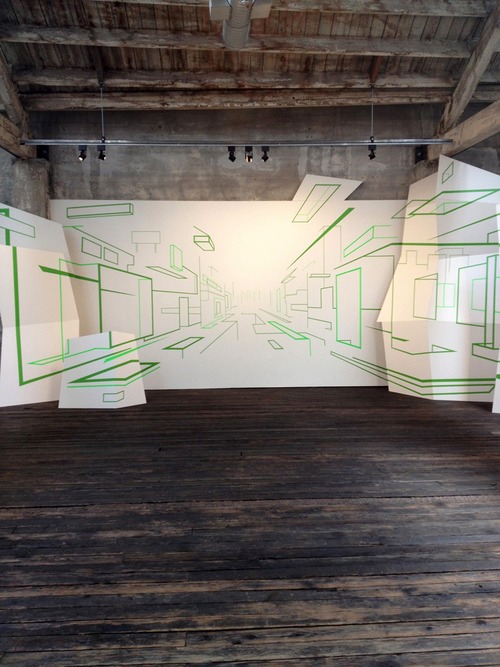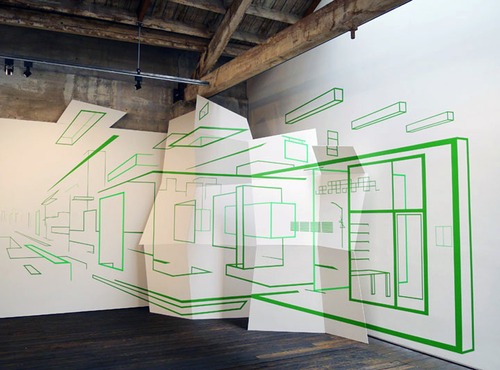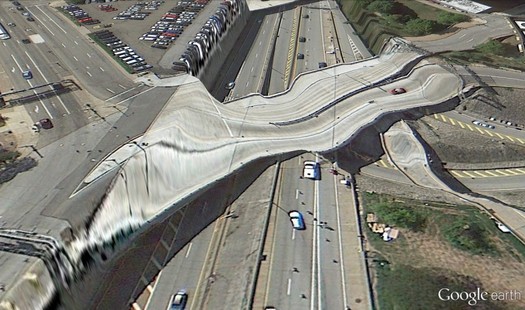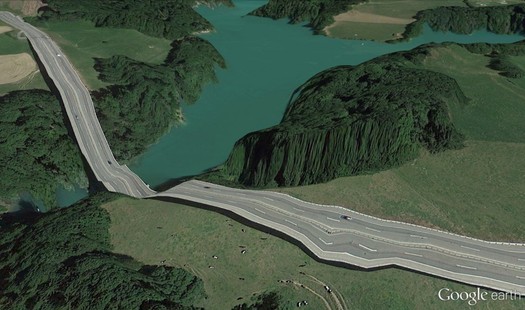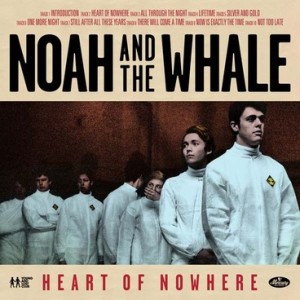ECONOMICS
FIGHT THE FUTURE
Paul Krugman | The New York Times
Even while urging us to run bigger deficits for the time being, Christine Lagarde, the fund’s head, called on us to “hurry up with putting in place a medium-term road map to restore long-run fiscal sustainability.”
So here’s my question: Why, exactly, do we need to hurry up? Is it urgent that we agree now on how we’ll deal with fiscal issues of the 2020s, the 2030s and beyond?
No, it isn’t. And in practice, focusing on “long-run fiscal sustainability” — which usually ends up being mainly about “entitlement reform,” a k a cuts to Social Security and other programs — isn’t a way of being responsible. On the contrary, it’s an excuse, a way to avoid dealing with the severe economic problems we face right now.
What’s the problem with focusing on the long run? Part of the answer — although arguably the least important part — is that the distant future is highly uncertain (surprise!) and that long-run fiscal projections should be seen mainly as an especially boring genre of science fiction.
STRUCTURAL EXCUSES
Paul Krugman | The New York Times
I promised in an earlier post to say something about why these days I tend to get annoyed when I hear the phrase “structural reform”, especially in Europe.
Part of the reason is that the phrase sounds good, but could mean lots of things. In many cases “structural reform” is code for eliminating worker protections and/or sharply cutting social benefits. Sometimes this may be necessary — let’s face it, France has made it much too attractive to retire at 55 — but such things should be called by their proper names, not wrapped in vague language that conceals the nature of the pain.
That brings me to a second problem: whenever some catchphrase becomes part of what Very Serious People say because it sounds Serious, it’s time to stop using the phrase, to force the VSPs to talk about what they really mean. In the US context, “entitlement reform” is VSP boilerplate — I mean, who can be against reform? But there’s a world of difference between trying to move away from fee for service medicine — a reform I support — and, say, raising the Medicare age, which would be a terrible policy. These things should not be lumped together.
But the main thing about “structural reform” in Europe is the role it plays in discussion of macroeconomic policies. Instead of reflecting on the fact that Europe is sinking deeper into depression five years into the slump, and clearly needs less austerity and more aggressive monetary expansion, the usual suspects start talking about the need for structural reform. And my sense is that this talk of reform has, in practice, become less a real demand for specific actions than an excuse for not facing up to the reality of macroeconomic disaster, and a way to avoid discussing the responsibility of Germany and the ECB, in particular, to help end this disaster.
_________________________________
ART
_________________________________
ROULEAUX: ANASTASSIA ELIAS’ NEW BOOK OF TOILET PAPER ROLL SCULPTURES
Christopher Jobson | Colossal
If you’ve visited any art or design blog over the last few years you’ve almost certainly run into the artwork of Anastassia Elias who made waves in 2009/2010 with her wonderful back-lit paper dioramas inside of toilet paper tubes. Today she announced a new book titled Rouleaux containing photos of 67 original works spanning 2009-2012. You can pick it up over on Blurb for about $22. See many more from this series right here.
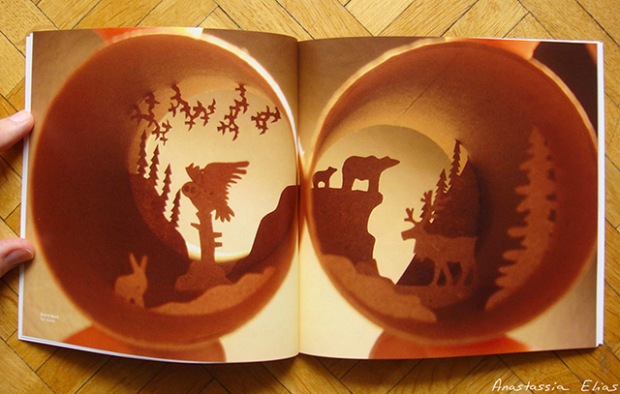

_________________________________
POLITICS
_________________________________
THE END OF THE SOLID SOUTH
Bob Moser | The American Prospect
Over the next two decades, it will become clear to even the most clueless Yankee that the Solid South is long gone. The politics of the region’s five most populous states—Virginia, North Carolina, Georgia, Florida, and Texas—will be defined by the emerging majority that gave Obama his winning margins. The under-30 voters in these states are ethnically diverse, they lean heavily Democratic, and they are just beginning to vote. The white population percentage is steadily declining; in Georgia, just 52 percent of those under 18 are white, a number so low it would have been unthinkable 20 years ago.
By the 2020s, more than two-thirds of the South’s electoral votes could be up for grabs. (The South is defined here as the 11 states of the former Confederacy.) If all five big states went blue, with their 111 electoral votes, only 49 votes would be left for Republicans. (That’s based on the current electoral-vote count; after the next census, the fast-growing states will have more.) Win or lose, simply making Southern states competitive is a boon to Democrats. If Republicans are forced to spend time and resources to defend Texas and Georgia, they’ll have less for traditional battlegrounds like Ohio and Pennsylvania. Even if Democrats aren’t competitive in those states for another decade, they will benefit from connecting with millions of nonvoters who haven’t heard their message. They are building for a demographic future that Republicans dread: the time when overwhelming white support will no longer be enough to win a statewide election in Texas and Georgia.
_________________________________
FOOD POLITICS
_________________________________
GAGGED BY BIG AG
Ted Genoways | Mother Jones | print
. . . It was a major PR win for PETA—which often appeals to local authorities to make arrests but rarely gets the kind of cooperation they got from the Greene County Sheriff’s Office—but it was also a hollow victory. “Who in their right mind would want to work in a dusty, ammonia-ridden pig shed for nine bucks an hour but somebody who, literally, had no other options?” asked Dan Paden, the senior researcher at PETA who helped run the investigation. “And at the end of a long, frustrating day, when you are trying to move a pig who hasn’t been out of its crate in [months], that’s when these beatings occur—and people do stupid, cruel, illegal things.” PETA was urging prosecutors to go beyond plea agreements for farmworkers; they wanted charges against farm owners and their corporate backers, to hold them responsible for crimes committed by undertrained, overburdened employees.
This prospect scared industrial-scale meat producers into organizing a coordinated pushback. Recognizing that, in the era of smartphones and social media, any worker could easily shoot and distribute damning video, meat producers began pressing for legislation that would outlaw this kind of whistleblowing. Publicly, MowMar pledged to institute a zero-tolerance policy against abuse and even to look into installing video monitoring in its barns. And yet last summer, at the World Pork Expo in Des Moines, MowMar’s co-owner Lynn Becker recommended that each farm hire a spokesperson to “get your side of the story out” and called the release of PETA’s video “the 9/11 event of animal care in our industry.”
. . . “It’s absurd,” said Amanda Hitt at the Government Accountability Project. She said she couldn’t believe that an industry that has been so regularly recorded breaking the law “would then have the audacity to come to any state legislative body and say, ‘Hey, we’re sick of getting caught doing crimes. Could you do us a favor and criminalize catching us?'”
_________________________________
DOCUMENTARY
_________________________________
SALT AND PEPPER
Keith Rivers | Vimeo
After finding a craigslist ad pronouncing the sale of over 2,000 pairs of salt and pepper shakers at a family estate sale director Keith Rivers was intrigued to dig deeper. Keith quickly found that the collection of salt and pepper shakers was a multi-decade old family tradition. After meeting the family Keith was given a treasure trove of old super 8 footage and upon review felt compelled to compile this short story documentary.
_________________________________
LABOR
_________________________________
FORTRESS UNIONISM
Richard Yeselson | Democracy
Taft-Hartley isn’t going anywhere. Its land mines still detonate. And it still defines the legal and political context in which labor must operate as it tries to map out a strategy for the future. An aggressive organizing strategy, of the sort labor attempted when John Sweeney took the helm of the AFL-CIO, just doesn’t work because the smart union strategists can’t compensate for a mostly (though not entirely) uninterested working class. But labor can, without undertaking lengthy and expensive campaigns to organize new sectors, work to buttress the areas in which it is already strong, extend its alliances with other progressive groups, and even train the worker leaders of tomorrow. I call this “Fortress Unionism,” and I believe it’s labor’s best play until the day arrives, if it ever does, when the workers themselves militantly signal that they want unions.
_________________________________
URBANISM
_________________________________
OBAMA NEEDS TO EMBRACE THE PROMISE OF AMERICA’S CITIES
Edward Luce | http://on.ft.com/1at14l6
Among America’s presidents, Mr Obama is arguably the most urban of all. From Honolulu to Jakarta, to Los Angeles, to New York, to Chicago, to Boston, then back to Chicago and finally to Washington, his life’s journey has been exclusively through cities. It would be hard to imagine small-town America producing a Barack Obama. Yet America’s urban revivalists have had a largely fruitless time trying to catch his administration’s attention. “I was at a conference in Brazil of 16 countries and 15 of them were talking about how to upgrade their cities,” says Ben Hecht, president of the Living Cities foundation, which distributes philanthropic dollars in the US. “Guess which was the odd one out?”
_________________________________
ART
_________________________________
DAMIEN GILLEY | AXIS INDEX (2013) AND FORTRESS (2008)

_________________________________
THE SURVEILLANCE STATE
_________________________________
TOP 5 TEMPTATIONS OF THE SURVEILLANCE STATE CAN’T RESIST
Tom Engelhardt | Informed Comment
As happens with so much news these days, the Edward Snowden revelations about National Security Agency (NSA) spying and just how far we’ve come in the building of a surveillance state have swept over us 24/7 — waves of leaks, videos, charges, claims, counterclaims, skullduggery, and government threats. When a flood sweeps you away, it’s always hard to find a little dry land to survey the extent and nature of the damage. Here’s my attempt to look beyond the daily drumbeat of this developing story (which, it is promised, will go on for weeks, if not months) and identify five urges essential to understanding the world Edward Snowden has helped us glimpse.
THE PRISM
Jill Lepore | The New Yorker
An extraordinary fuss about eavesdropping started in the spring of 1844, when Giuseppe Mazzini, an Italian exile in London, became convinced that the British government was opening his mail. Mazzini, a revolutionary who’d been thrown in jail in Genoa, imprisoned in Savona, sentenced to death in absentia, and arrested in Paris, was plotting the unification of the kingdoms of Italy and the founding of an Italian republic. He suspected that, in London, he’d been the victim of what he called “post-office espionage”: he believed that the Home Secretary, Sir James Graham, had ordered his mail to be opened, at the request of the Austrian Ambassador, who, like many people, feared what Mazzini hoped—that an insurrection in Italy would spark a series of revolutions across Europe. Mazzini knew how to find out: he put poppy seeds, strands of hair, and grains of sand into envelopes, sealed the envelopes with wax, and sent them, by post, to himself. When the letters arrived—still sealed—they contained no poppy seeds, no hair, and no grains of sand. Mazzini then had his friend Thomas Duncombe, a Member of Parliament, submit a petition to the House of Commons. Duncombe wanted to know if Graham really had ordered the opening of Mazzini’s mail. Was the British government in the business of prying into people’s private correspondence? Graham said the answer to that question was a secret.
_________________________________
BOOKS | BIOGRAPHY
_________________________________
THE GIFT OF DOUBT
Malcolm Gladwell | The New Yorker
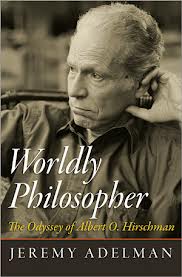 As was nearly always the case with Hirschman’s writing, he made his argument without mathematical formulas or complex models. His subject was economics, but his spirit was literary. He drew on Brecht, Kafka, Freud, Flaubert, La Rochefoucauld, Montesquieu, Montaigne, and Machiavelli, not to mention Homer—he had committed huge sections of the Odyssey to memory. The pleasure of reading Hirschman comes not only from the originality of his conclusions but also from the delightfully idiosyncratic path he took to them. Consider this, from the same essay (and, remember, this is an economist who’s writing):
As was nearly always the case with Hirschman’s writing, he made his argument without mathematical formulas or complex models. His subject was economics, but his spirit was literary. He drew on Brecht, Kafka, Freud, Flaubert, La Rochefoucauld, Montesquieu, Montaigne, and Machiavelli, not to mention Homer—he had committed huge sections of the Odyssey to memory. The pleasure of reading Hirschman comes not only from the originality of his conclusions but also from the delightfully idiosyncratic path he took to them. Consider this, from the same essay (and, remember, this is an economist who’s writing):
While we are rather willing and even eager and relieved to agree with a historian’s finding that we stumbled into the more shameful events of history, such as war, we are correspondingly unwilling to concede—in fact we find it intolerable to imagine—that our more lofty achievements, such as economic, social or political progress, could have come about by stumbling rather than through careful planning. . . . Language itself conspires toward this sort of asymmetry: we fall into error, but do not usually speak of falling into truth.
“Worldly Philosopher: The Odyssey of Albert O. Hirschman” (Princeton), by the Princeton historian Jeremy Adelman, is a biography worthy of the man. Adelman brilliantly and beautifully brings Hirschman to life, giving us an unforgettable portrait of one of the twentieth century’s most extraordinary intellectuals.
_________________________________
CHOCOLATE
_________________________________
A CHOCOLATE MAKER’S BIG INNOVATION
Corby Kummer | MIT Technology Review
What sets Tcho apart from other chocolate makers is that it doesn’t just scout the equator looking for cacao farmers it can admire, hoping they’ll grow great beans that might make wonderful chocolate. The company does something new: it provides growers with all the tools they need to have chocolate tastings during harvesting and processing, the crucial period that determines the price a cacao farmer’s crop will command. Tcho combines coffee roasters, spice grinders, and modified hair dryers to equip “sample labs”—pilot plants that produce tiny lots of chocolate right where cacao is grown. The company gives cacao farmers customized groupware so that they can share tasting notes and samples with chocolate makers. In this way, the farmers can bring entire harvests up to the standards of Tcho or any other buyer.
This is a huge change. Just as some coffee growers have never drunk coffee made from their beans, some cacao growers in remote areas have never tasted chocolate made with theirs. (Since chocolate is much harder to make than coffee, some may have never tasted chocolate at all.) Teaching them to recognize the flavors in fermented, roasted, and ground cacao beans, and then understand how they can adapt their growing processes, will be Tcho’s lasting contribution to chocolate making—even if hair dryers and spice grinders weren’t quite the tech the company had in mind when it opened a factory and shop on a historic pier in San Francisco’s Embarcadero, in 2007.
_________________________________
ERROR
_________________________________
WHEN GOOGLE EARTH GOES WRONG
OBlog | Design Observer
Clement Valla is an artist in Brooklyn, New York who discovers and collects ‘anomalies’ within the Google Earth system in his ongoing series entitled Postcards from Google Earth.
I collect Google Earth images. I discovered strange moments where the illusion of a seamless representation of the Earth’s surface seems to break down. At first, I thought they were glitches, or errors in the algorithm, but looking closer I realized the situation was actually more interesting — these images are not glitches. They are the absolute logical result of the system. They are an edge condition — an anomaly within the system, a nonstandard, an outlier, even, but not an error. These jarring moments expose how Google Earth works, focusing our attention on the software. They reveal a new model of representation: not through indexical photographs but through automated data collection from a myriad of different sources constantly updated and endlessly combined to create a seamless illusion; Google Earth is a database disguised as a photographic representation. These uncanny images focus our attention on that process itself, and the network of algorithms, computers, storage systems, automated cameras, maps, pilots, engineers, photographers, surveyors and map-makers that generate them.
We’ve included a few samples from of Clement’s collection. You can see more on Postcards from Google Earth.
_________________________________
MUSIC
_________________________________
NOAH AND THE WHALE: HEART OF NOWHERE
Hazel Sheffield | NME
It’s a record of rare precision; the kind that comes from figuring out exactly what you want. The kind that comes from being all grown up.
One of the weirdest things about growing up is that the person you used to be starts to seem like a stranger. The only way to look back at that person is to look for little clues from the past that might tell you how things came to be. When Fink, now 26, sings “I was looking for ‘Harvest’, but I only found ‘Silver & Gold'” on ‘Silver And Gold’ in the middle of the album, he finds one such clue. It’s the story of a 15-year-old Fink trying to get his hands on Neil Young’s classic album from the ’70s, but discovering instead the thoughtful acoustic album Young released at the age of 55. Fink decides you might not always get what you’re expecting, but sometimes it can work out for the best anyway. The song itself, ‘Silver And Gold’, feels like the older cousin to that other old Noah And The Whale singalong, ‘Give A Little Love’ from their first album. Back then the band were writing big, plodding anthems full of promises – “I will always be the sun and moon to you” – that grown-up Noah And The Whale knows it can’t keep. Fink has stopped asking for love, and started asking for the truth. “Love may not always be the cure,” he sings, “so just show a little faith in me”.
There’s not an ounce of the band’s early plod on this album, and none of the glassy studio production that made ‘Last Night On Earth’ sound like it was made to be played on a long drive down Highway 101. Instead, ‘Heart Of Nowhere’ is full of space created less by production and more by expert playing – from the clean, bone-like tapping of xylophone keys in the intro, to the strings behind Anna Calvi’s vocal in the triumphant title track. Calvi sings like she’s got four lungs, and Noah And The Whale are writing songs that stand up to the sound.
